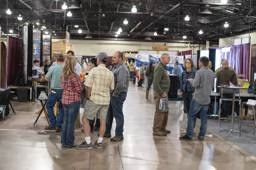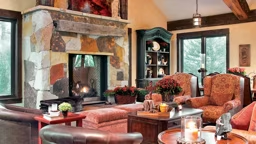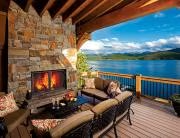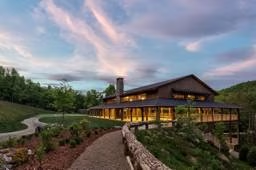
There are a lot of reasons to love timber homes. A huge part of their appeal is the Norman Rockwell-esque picture of family gathering together at the holidays. As enticing as that vision is, it’s never a good idea to design a house specifically around once-a-year events.
Even so, as you’re planning your own timber home, it may not be a bad idea to keep certain milestone dates in mind: Will your dining area accommodate the whole family for Thanksgiving? Do you have adequate space (and height) allocated for the Christmas tree? Is your backyard patio big enough for your annual Fourth of July blowout?
Each holiday has different needs, and you won’t want to go overboard by adding excessive size or specialized rooms that otherwise will sit vacant. After all, you’ve got to live with these decisions the other 360-plus days of the year. But one area where you’ll never regret adding a little extra is in your home’s electrical capacity and placement. Overloaded outlets; extension cords snaking around the house and through the yard … we’ve all been there. Here, we’ll help you avoid the frustration and bring back the cheer with a little strategic planning as you build your log or timber frame home.
For starters, if you’re a person who loves to drape the exterior of your home in holiday lights, one of the smartest things you can do to make your life easier it to install GFI outlets in the soffits along the roof. Simply adding one in every corner will allow you to run your light strings cleanly, without the need for extension cords trailing to the ground. Incorporating this convenience as you build will cost next to nothing to achieve. Retrofitting later will be much more difficult and expensive.
If filling your front yard with animatronic Santas and inflatable snowmen is your thing, you’ll want to be sure you have several outlets embedded into the front and side facades of the house, not merely the code-required one near the front door. This way you can spread the cords widely so that you don’t overload one specific circuit.
To further reduce your dependence on extension cords, before you perform your final landscaping, consider running an underground electrical line from the house to an outlet at the mailbox, along the base of a fence line or, if you have a lamppost at your sidewalk or driveway, place a plug at its base. These simple strategies will make short work of adding twinkle lights to the fence or an illuminated wreath on the mailbox. Again, during the construction phase, the cost is negligible; later on, it will be much more disruptive and expensive.
And speaking of cords, since most log and timber homes boast centrally located great rooms, many holiday revelers prefer to place their Christmas tree smack in the center where it can be appreciated equally from the kitchen, living and dining areas. If you identify with this desire, install an electrical outlet in the floor so that you can plug the lights in there, rather than into a wall socket that will cause a tripping hazard with the cord. The plug can be sealed and flush with the floor when not in use. The convenience and safety are worth it.
There are events other than Christmas that could use a power boost, too. Summertime is prime picnic season, but when the sun goes down, the guests go inside — unless you plan ahead. Creating an outdoor environment that extends the afternoon fun into the evening is simply a matter of planning. A few electrical outlets near a patio or fire pit allow you to install bug zappers, TVs and sound systems.
And if you have an expansive yard where you know you’ll host large gatherings, consider installing larger-than-life flood lights on the roof angled toward the party zone. You’ll be able to light up the entire yard in stadium-like fashion, so you can continue your celebration well into the night. This feature used to be a luxury, because, back in the day, if you turned one of these lights on, your meter would spin like a Frisbee. But efficient LED lighting saves the day and your monthly electrical budget.
In a nutshell, your log or timber home’s design/build phase is the time to start thinking about what your extracurricular energy needs will be. Consider how you’d like to spend every season and celebration. The power is in your hands.
See Also: How to Plan Your New Log or Timber Home's Electrical Needs





_11868_2023-06-30_11-50-256x288.avif)




